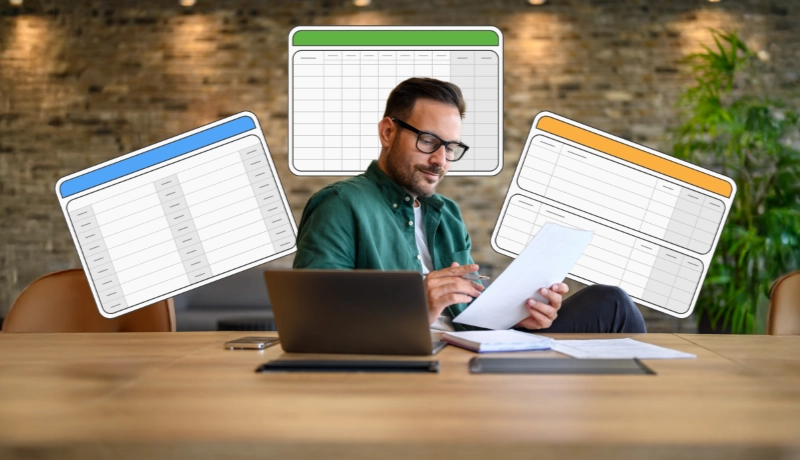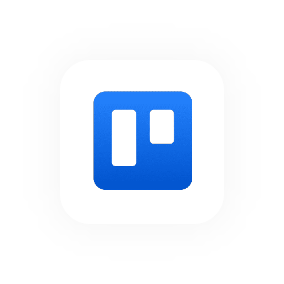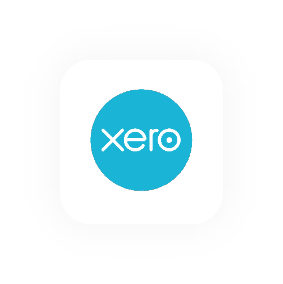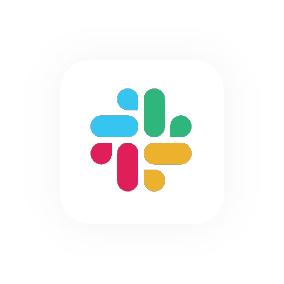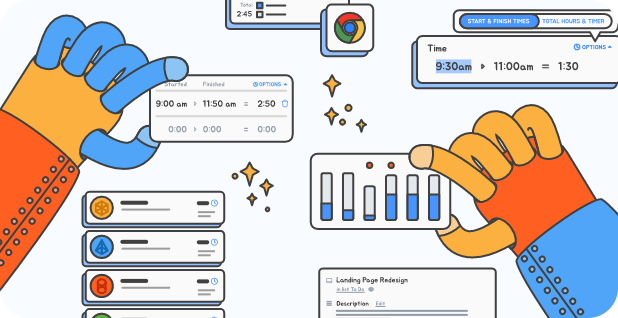How To Track & Improve Employee Performance
How to track employee performance in your workplace
Let’s get one thing straight: tracking employee performance doesn’t have to be a bad thing.
The word ‘tracking’ might evoke images of invasive procedures or overbearing managers. But done right, it can lift an entire workplace into a well oiled machine that increases productivity AND job satisfaction. After all, employees who feel they are doing well at work tend to feel a much higher sense of job happiness.

Whether you're managing a small business or leading a department in a large organization, knowing how to effectively keep track of employee performance can help you identify areas for growth, optimize resource allocation, and boost overall productivity.
This guide outlines strategies, tools, and best practices that will enable you to monitor employee performance, improve employee productivity, and make the performance management process more effective for everyone involved.
Why Employee Performance Matters
At the heart of every successful company are its people. Strong employee performance directly correlates with better business outcomes—higher customer satisfaction, increased efficiency, and more innovation.
However, many organizations struggle with the mechanics of how to track employee performance. It’s not just about watching what employees do—it's about understanding how employees work, why they perform the way they do, and how to provide support that leads to meaningful improvement.
Step 1: Set Clear Performance Expectations
Before you can track anything, you need to define what success looks like. Setting clear, measurable goals ensures employees work with purpose and direction.
SMART goals—Specific, Measurable, Achievable, Relevant, and Time-bound—provide a structured way to guide and assess performance. Defining performance expectations around tasks, deadlines, and desired outcomes ensures each particular task is aligned with company objectives.
Step 2: Use Key Performance Indicators (KPIs)
Key performance indicators serve as benchmarks for evaluating success across various roles. Whether it's sales targets, project completion rates, or customer satisfaction scores, KPIs allow you to track employee results objectively.
When selecting KPIs, tailor them to each role. For example, a sales associate might be measured on the number of closed deals, while a designer may be assessed on the number of completed creative projects and stakeholder feedback.
Step 3: Choose the Right Performance Tracking Tools
Technology makes it easier than ever to track employee performance and generate actionable insights. Implementing the right performance management software, performance tracking apps, and project management tools enables organizations to collect, analyze, and act on performance data more efficiently.
Some organizations use employee monitoring software or time tracking tools to ensure employees spend their time productively during work hours. While monitoring should always be ethical and transparent, these tools can be helpful when used to support, not surveil.
Other helpful platforms include:
- Time tracking software for logging hours and managing routine tasks (like, ahem, Hourly)
- Self monitoring tools for individuals to manage their own performance
- Performance management systems that automate performance evaluations and store your performance file for each team member
Step 4: Conduct Regular Performance Reviews
Performance reviews—when done right—are essential to employee development. These structured conversations provide an opportunity to deliver constructive feedback, recognize achievements, and set future goals.
Instead of waiting for annual performance reviews, shift toward more frequent check-ins. Monthly or quarterly reviews allow for faster course correction and better alignment between manager and individual employees.
To streamline these conversations, use a performance review template. This ensures consistency and clarity across departments and helps you track progress over time.
Step 5: Gather and Analyze Performance Data
Data-driven performance management allows you to make objective decisions. Collect performance data such as:
- Completed tasks vs. assigned tasks
- Timeliness
- Peer reviews
- Customer satisfaction scores
- Project milestones
Analyzing this data reveals trends, strengths, and gaps. These valuable insights can help you identify areas for improvement, determine who needs additional training, and pinpoint what processes need adjustment.
Step 6: Provide Constructive Feedback and Coaching
One of the most effective ways to improve employee performance is through timely, constructive feedback. Feedback should be specific, actionable, and supportive—not punitive.
Make sure to gather employee feedback as well. This two-way exchange fosters mutual respect, improves employee morale, and helps uncover barriers that may be preventing employees from reaching their full potential.
Additionally, use coaching as a tool for performance enhancement. Managers should serve as mentors, helping team members build skills and confidence.
Step 7: Foster Employee Engagement and Collaboration
Employee engagement is a major driver of performance. Engaged employees are more committed, productive, and innovative. One way to boost engagement is to involve employees in decision-making and goal setting.
You can also encourage collaboration through team-based projects and shared KPIs. When team members are accountable to each other, team performance tends to rise.
Step 8: Enable Personal and Professional Growth
Tracking performance shouldn’t be solely about meeting quotas. Use the data to support employee development and personal growth.
Offering additional training, skill-building workshops, or stretch assignments can help develop future leaders. An environment that values learning and growth encourages continuous learning, enhances loyalty, and improves retention.
In fact, encouraging continuous learning is one of the best ways to motivate employees, especially when it’s linked to personalized career paths and development plans.
Step 9: Make Performance Management Continuous
A one-time review or a static report won’t cut it. Continuous performance management is the new standard.
Here's how:
- Schedule regular meetings between managers and their direct reports
- Use staff performance tracker tools to log updates weekly or bi-weekly
- Keep open channels for feedback throughout the year
- Update the performance review template to reflect evolving roles and responsibilities
This approach leads to quicker improvements and a stronger culture of accountability.
Step 10: Address Issues and Adjust Tactics
When performance problems arise, don’t avoid them. It’s crucial to address concerns early through open, respectful communication.
Some issues might stem from poor role fit, unclear expectations, or lack of support. Others may be solved with software solutions, such as better task management systems or refined resource allocation.
Document performance challenges in the employee performance evaluations and use these moments as opportunities for coaching—not punishment.
Step 11: Customize Tracking Based on Roles
Different roles require different approaches to tracking performance. For example:
- For creatives: focus on individual performance, deadlines, and stakeholder feedback.
- For sales: track lead conversion rates, meetings booked, and revenue generated.
- For operations: monitor completion of assigned tasks, efficiency metrics, and cross-functional collaboration.
No matter the role, consistency in tracking and regular feedback is key.
Step 12: Use Real-Time Feedback and Recognition
Real-time recognition is just as important as formal reviews. When an employee goes above and beyond, say it immediately. This reinforces good behavior and boosts motivation.
Consider using peer-to-peer shoutout tools or team Slack channels to celebrate wins. Recognition doesn’t need to be elaborate—just timely and sincere.
Step 13: Measure Outcomes, Not Just Activity
Productivity is not about being busy—it’s about impact. While it’s helpful to see how employees spend their time, what matters more is what they’re achieving.
Instead of only monitoring inputs, focus on:
- Completed deliverables:
- Outcomes aligned with business goals
- Quality of work
- Contributions to team dynamics
When you monitor employee outcomes, you paint a fuller picture of true effectiveness.
Step 14: Tie Performance to Business Results
Ultimately, the goal of performance management is to drive business performance. The data you collect should help inform:
- Strategic planning
- Hiring decisions
- Compensation adjustments
- Promotions
When most companies align employee goals with organizational objectives, they see better execution and engagement across the board.
Performance Tracking is a Continuous Journey
Learning how to track employee performance is just the beginning. Once you have the right tools, mindset, and systems in place, you’ll begin to see noticeable improvements in employee productivity, collaboration, and business outcomes.
Use clear goals, performance metrics, regular check-ins, and data-driven insights to guide your process. Most importantly, keep your focus on people. With the right support, tools, and feedback, every employee can thrive—and so can your organization.
Whether you're implementing employee performance tracking for the first time or refining your performance management system, remember that performance isn’t just about the numbers—it’s about growth, impact, and creating an environment where employees work at their best.

